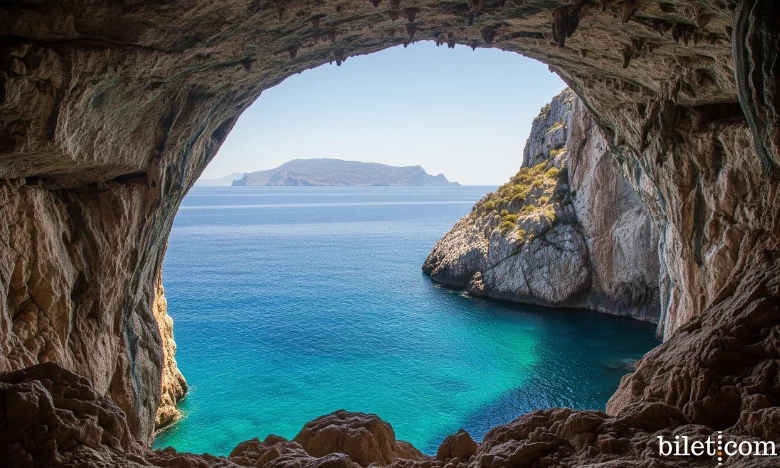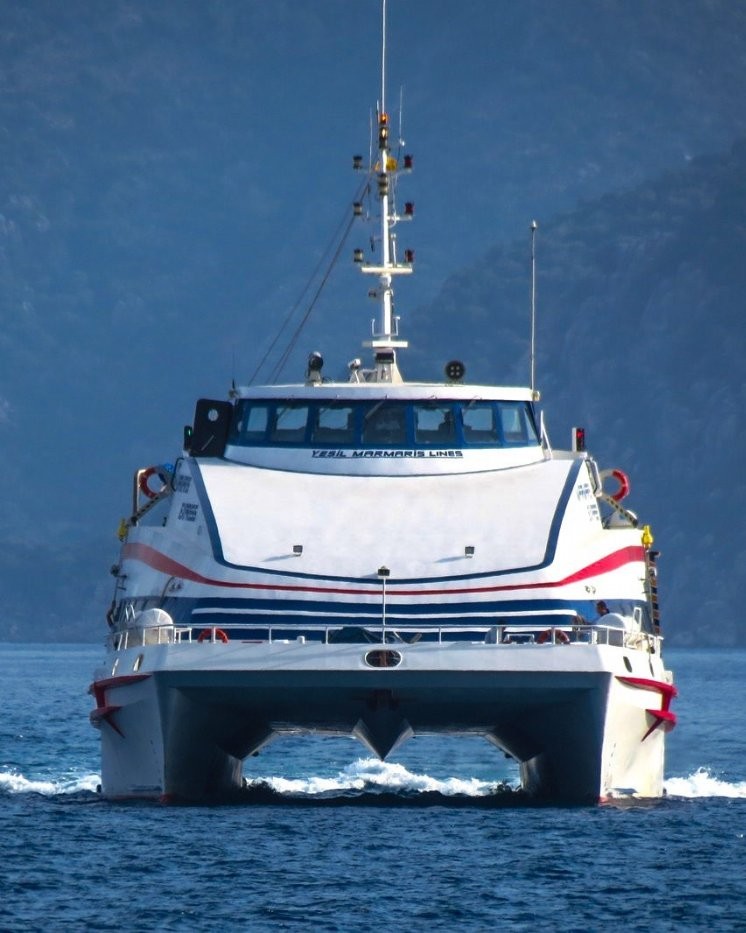Origin of the Name: "Kalymnos" and "Kilimli"
The origin of the name Kalymnos carries clues about the island's natural structure and mythological past:Kalymnos (Κάλυμνος): According to the most common theory, the name of the island is derived from the ancient Greek words "kalos" (good, beautiful) and "hydna" (water). This means something like "island of beautiful waters". According to another mythological narrative, the island takes its name from the Titan Kalydnos.
Kilimli: The Turkish name of the island, "Kilimli", is a phonetic adaptation of the name "Kalymnos". It is also thought that this name was settled because the texture of the island's sponges resembled rugs or as a result of cultural interactions during the periods when the sponge trade was intense.
Riches from the Deep Sea: The Legacy of Sponge Diving
To understand the spirit and history of Kalymnos, it is necessary to know the story of sponge diving. For centuries, the economy, culture and social life of the island have been shaped entirely around this dangerous but profitable profession."Sponge Divers": Men from Kalymnos were known as the most talented and brave divers in the Aegean since ancient times. They would dive tens of meters under the sea with simple equipment, sometimes even naked, to collect sponges. This profession brought wealth to the island, but it also caused many families to mourn the danger of getting the "benefits".
Cultural Influence: The launch of the sponge fishing fleets each spring was celebrated on the island with great ceremonies and prayers. This tradition is deeply ingrained in the music, dances and social fabric of the island. Today, the Maritime and Sponge Diving Museum in Pothia offers an impressive collection of this rich and difficult past. The natural sea sponges sold in the island's harbour and shops are the most tangible reminder of this heritage.
A New Identity at the Top of the Rocks: Rock Climbing Paradise
Over the last few decades, Kalymnos has taken its identity from the depths of the sea to the sky, namely its sheer cliffs. The island has become one of the world’s top sport climbing destinations, with magnificent limestone cliffs, thousands of climbing routes and areas for all levels.An International Hub: Iconic climbing scenes such as the huge stalactite cave of Grande Grotta attract thousands of climbers to the island every year. This new wave of tourism has boosted the island's economy and made Kalymnos an international adventure sports hub.
Traces of History and Beauties to Discover
Beyond sponges and climbing, Kalymnos has a rich history and many beauties waiting to be discovered:Pothia (Capital): Unlike a typical Cycladic village, Pothia is a lively and busy port city, decorated with colorful neoclassical mansions from the Italian period. It has an authentic atmosphere with its narrow streets, churches and lively port area.
Vathy Valley: This lush and fertile valley, located on the east of the island, eventually opens up to a long and narrow sea inlet. This landscape, reminiscent of the Norwegian fjords, with its small port called Rina, calm waters and citrus groves around it, is one of the most surprising beauties of the island.
Myrties, Masouri and Telendos Island: On the west coast of the island, Myrties and Masouri are the main base for rock climbers and holidaymakers. Opposite them is the tiny Telendos Island , a car-free, peaceful islet that was separated from Kalymnos by an earthquake in 554 AD. It can be reached in a few minutes by boat from Myrties.
Chorio (Old Capital): Built on a hill inland to protect against pirate attacks, the old capital Chorio is located at the foot of a Byzantine castle (Kastro).
Beaches: The tranquil Emporios Bay in the north of the island and the popular Kantouni and Linaria beaches offer good options for enjoying the Aegean.
Plan a trip to Kalymnos now to witness the brave heritage of sponge divers, challenge yourself to some of the world's best climbing routes or simply get lost in the tranquility of this unique island in the Aegean!







